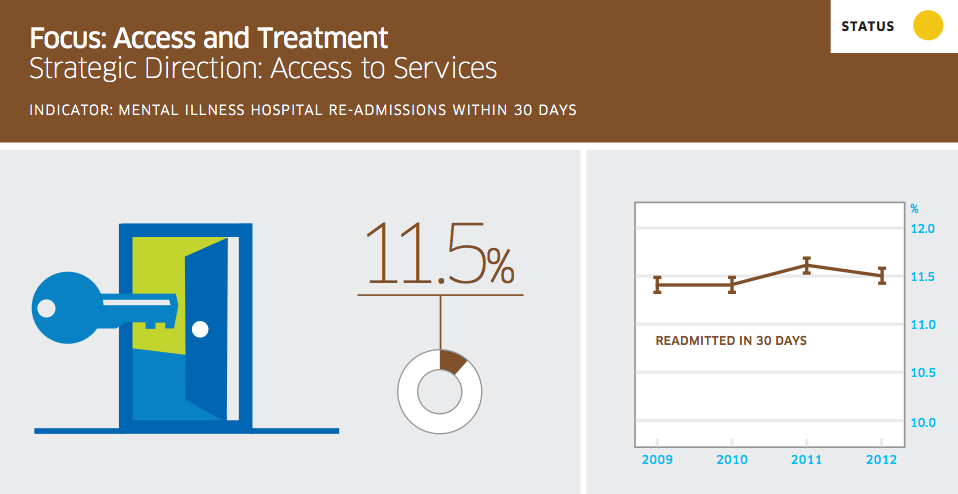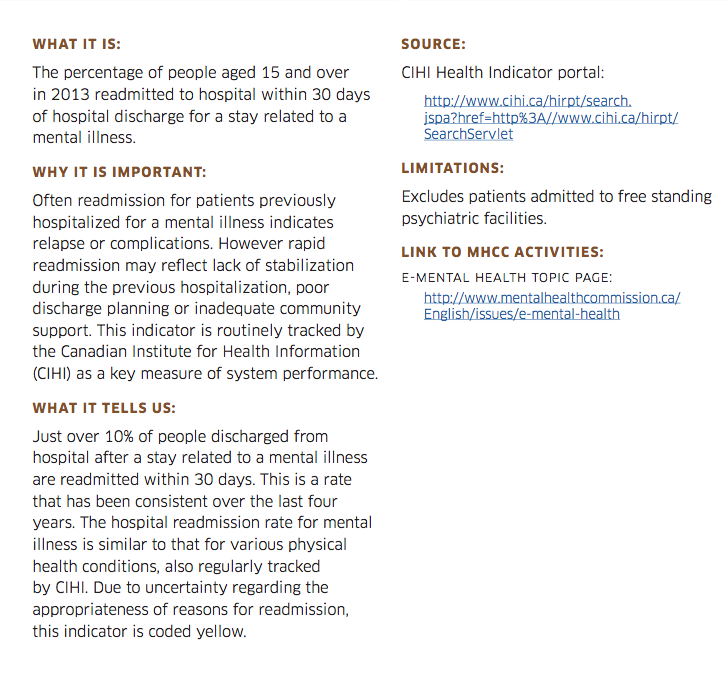Today is Bell’s Let’s Talk day. Bell’s campaign focuses on creating awareness, and engaging Canadians in public conversations about mental health issues. There continues to be a great deal of stigma surrounding mental illness. The below infographic, published by the Mental Health Commission of Canada as part of their Informing the Future: Mental Health Indicators of Canada report, addresses some of the unmet needs for mental health care among individuals.

Over one tenth of individuals admitted for poor mental health were readmitted within 30 days of their release. This indicates that a sizeable portion of individuals either received inadequate treatment, or were released into a system that is not equipped with adequate resources to prevent readmission. The term discharge planning is used to refer to the procedures in place designed to ensure that patients, when leaving a phase of care, are provided with the necessary supports and care for continued well-being. Aspects of discharge planning include everything from making sure that patients have the necessary medical equipment, medications, and access to care following their release.
Individuals are often discharged from the hospital straight into critical housing situations, or even homelessness. Stress associated with being homeless can cause, and even exacerbate, existing problems for those with poor mental health. Many emergency shelters are not sufficiently equipped to treat individuals suffering from mental illness. There needs to be more services available for homeless individuals suffering from mental illness, and the nature of care provided to these individuals needs to be more comprehensive.
Research has shown that releasing people with poor mental health into communities that have the necessary supports and interventions results in a drop in readmission rates. Unfortunately, few communities have the kinds of supports and interventions in place that can lead to a drop in readmissions. Targeted supports, even those brief in duration, can have a lasting impact on individuals suffering from mental health problems. These supports act as a preventative measure against both homelessness and hospital readmission. Having these supports in place is more cost-efficient and effective than keeping individuals in a continuous cycle of hospital readmission and release.
People who have a severe mental illness are overrepresented among homeless populations partially because of poor discharge planning and the absence of supports. Rather than designing programs from the top-down, it would be highly beneficial to consider how the lived experiences of homeless individuals living with poor mental health can be used to inform existing practices and programs. This can allow for the development and expansion of policies and procedures that are effective in addressing the mental health needs of homeless Canadians.
While public knowledge and awareness has improved in recent years, there remain barriers to accessing and receiving adequate mental health treatment across Canada. It’s critical that we continue to move beyond conversation to action on issues surrounding mental health.


